So you want to be a developer? Now’s a great time to learn programming. The salaries are high, the job demand is growing, and a new and exciting coding language tops the popularity rankings every year.
But which is the best programming language to learn? If you’re new to this, there are many choices to pick from, making it difficult to know where to start.
Programming languages are continually evolving—while one dies, it gets replaced by the new big thing. If you time it well, you stand to earn a lot of money. Or you can go with the tried and tested languages that have stood the test of time.
All of it is enough to make your head spin. Which programming language is best to learn? Which give the highest salaries? Are they easier to start learning? This list will guide you through everything you need to know about picking the best programming language to learn.
Let’s explore!
What Are the Different Types of Programming Languages?
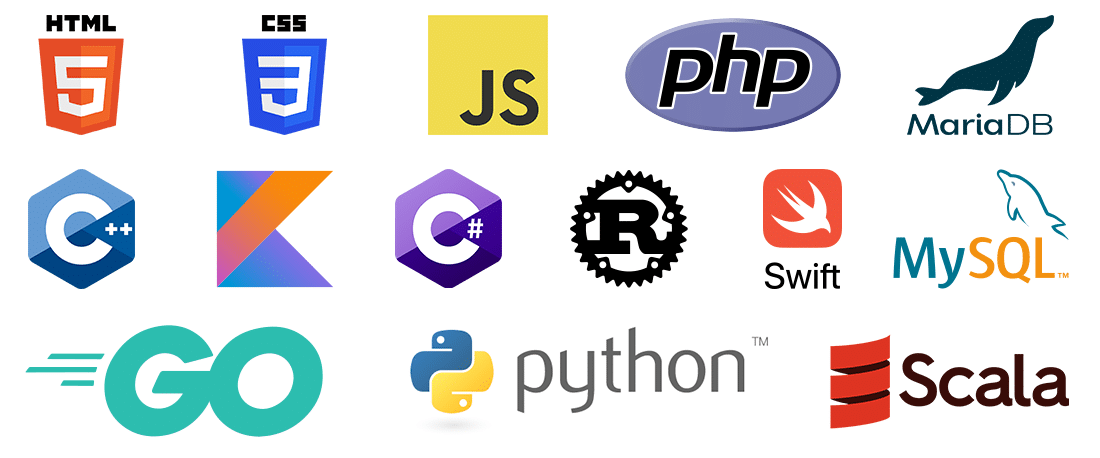
Every programming language is different. While each programming language has its unique syntax, how it’s written, run, and compiled can change everything.
Many developers prefer to work with certain types of languages. It’s also a lot easier to migrate between similar languages, so the first programming language you learn matters.
So what are the different types of programming languages? There’s a difference between scripting and programming languages? Let’s take a look.
- Programming languages can be just about anything, but they’re often best for software development as they can be used on various platforms and tend to be compiled rather than interpreted. Most programming languages are intended for software development, to develop programs you download and run on your device.
- Scripting languages are just the opposite. They’re often interpreted, which means their code runs on the fly rather than going through a compiling process inside a program. Web development languages are often scripting languages.
- Markup languages aren’t precisely programming languages, but they’re used for web development. These are human-readable tags used to format a document.
- Web development languages are specialized for creating websites, either in the frontend or backend.
- Frontend (or client-side) languages change a website in the user’s browser. For instance, clicking something on the website and producing an animation would result from frontend programming like CSS, HTML5, and JavaScript. It’s usually a combination of all the above languages.
- Backend (or server-side) languages change a site from the server or application layer. For example, submitting form data, or changing something in the database, is backend programming.
You should also note that many people just use “programming languages” to refer to all coding languages as a whole. A scripting language is a specialized programming language, but not all programming languages are scripting languages.
Not all languages below are programming languages in the strictest sense, but they’re all used for coding.
It’s time to dive in!
HTML and CSS
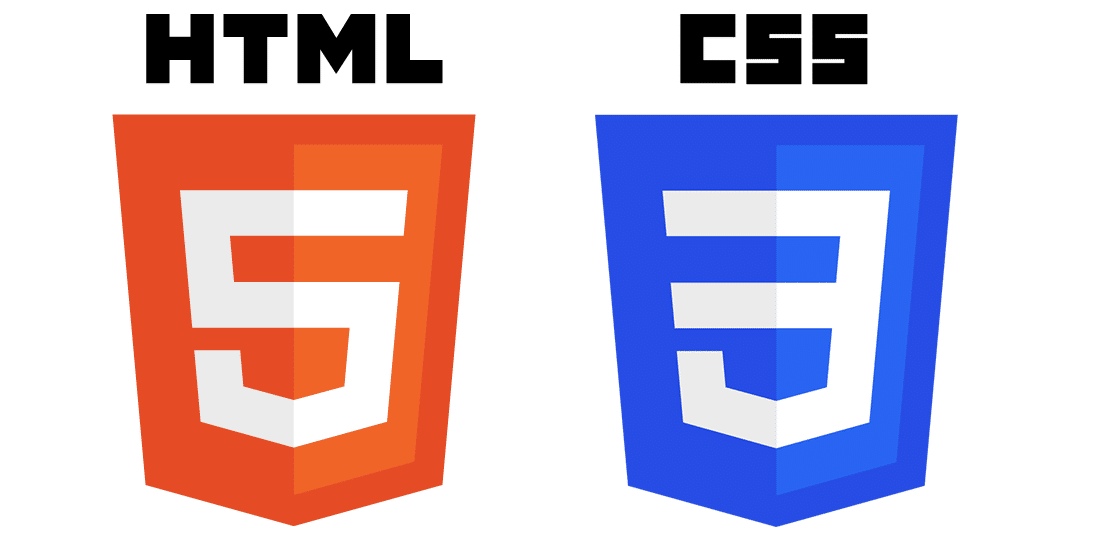
Though HTML and CSS aren’t technically programming languages, HTML5 and CSS3 are the ideal places to start if you want to be a front-end web developer. This duo makes up the building blocks of any webpage, with HTML structuring a page’s content, and CSS styling and modifying that structure.
HTML and CSS are a great jumping-off point for any young developer. While HTML is an easy-to-learn markup language, CSS will challenge you a bit more, but it’s not incredibly difficult to pick up either.
| Platform | Frontend web development. |
| Difficulty | HTML is straightforward to learn; CSS is also reasonably easy to learn. |
| Popularity | #10 on IEEE’s top languages of 2023. Loved by 54% of StackExchange developers in 2020. |
| Average Salary | $64k/year, according to PayScale. Also, check out the average web designer’s salary. |
| Advantages | It is practically required to be a frontend web developer. Very easy to learn, even for people with no programming experience. Its high popularity makes finding free resources easy. Well-supported on all devices. |
| Disadvantages | It doesn’t net you an exceptionally high salary because it’s a requirement for all frontend web development jobs. Cross-browser issues are always a concern. |
JavaScript
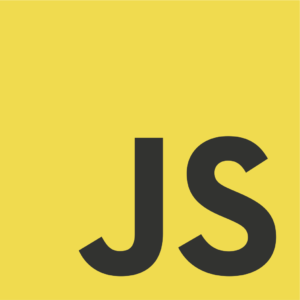
Though HTML and CSS are must-haves for frontend web developers, JavaScript is overwhelmingly popular. While HTML structures and CSS styles, JavaScript adds advanced client-side functions to a webpage.
Unlike HTML and CSS, JavaScript is a real programming and scripting language. It means you can do far more with it, but it’s also a bit harder to learn. Still, if you want to develop more than just a flat page, you almost definitely need to know JavaScript.
| Platform | Frontend scripting. Rarely used for mobile/software development. |
| Difficulty | JavaScript is a real programming language, so those coming straight from HTML and CSS may have difficulty with it. Compared to other languages, it’s moderately easy to learn. |
| Popularity | Very popular, often going hand in hand with HTML and CSS. #3 in PYPL Popularity Index of Feb. 2021. #7 in TIOBE Index for Feb. 2021. #5 on IEEE’s top languages of 2023. Loved by 58% of StackExchange developers in 2020. |
| Average Salary | $83k/year, according to PayScale. |
| Advantages | The fastest and easiest way to code client-side scripts that run in the browser. A highly popular programming language. Broad support across various applications. It practically powers most of the modern websites, including this. |
| Disadvantages | It may be overwhelming to learn for those who only know markup languages. Has issues with security and cross-browser stability. |
PHP

PHP is the language of choice for massive projects, most notably WordPress itself. It once divided the developer community due to being outdated and slow, and many still hold onto the belief that it isn’t worth the time to learn.
However, PHP has come back into style since PHP 5.x with a swath of improvements to speed and structure. According to W3Techs, 79% of the websites they surveyed use PHP.
One thing is clear—it’s a powerful way to code server-side applications, and compared to other scripting languages, it’s effortless to learn. Its popularity among new programmers and the plethora of open source projects like WordPress means there’s plenty of learning resources too.
Dozens of popular PHP frameworks such as Laravel exist, which can make your job coding with PHP even easier. With the launch of PHP 8.0, PHP is trying to break away from being just a backend scripting language to being a general-purpose programming language.
| Platform | Backend web scripting. |
| Difficulty | Easy to learn, especially for beginners. |
| Popularity | #6 in PYPL Popularity Index of Feb. 2021. #8 in TIOBE Index for Feb. 2021. #13 on IEEE’s top languages of 2023. Loved by 37% of StackExchange developers in 2020 (but dreaded by 63%!) |
| Average Salary | $65k/year according to PayScale. |
| Advantages | Very easy to learn. Well-established in web development and commonly found on websites. Modern versions are reasonably fast. Easy to find a job as a PHP developer. |
| Disadvantages | Popularity is declining compared to hot new languages like Python. Many developers don’t consider it viable. |
SQL
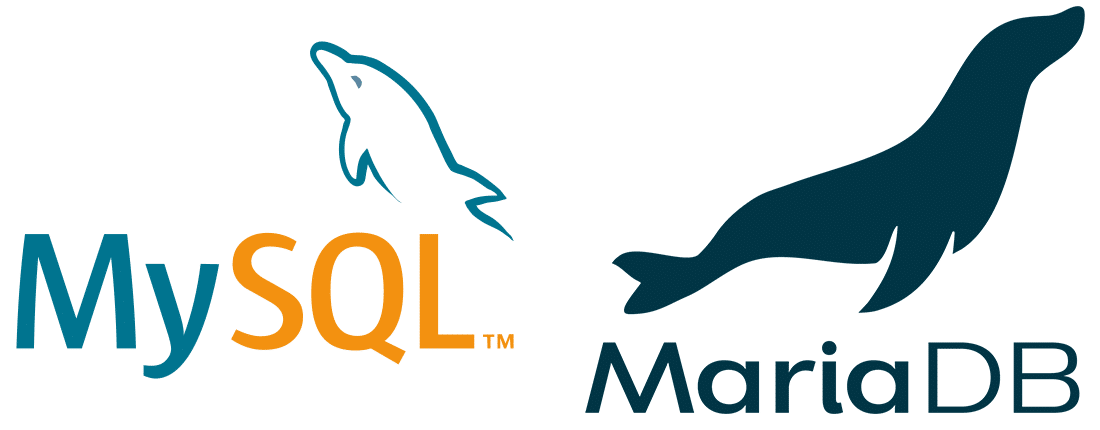
Many say that SQL is not technically a programming language, as you can’t use it the same way as a general-purpose language like C++ or JavaScript. But however you define it, it’s a critical web development tool like any other.
SQL’s primary purpose is to interface with a website’s database. A variety of database management systems like MySQL, MariaDB, SQLite, and PostgreSQL exist to help you deal with it, but all of them use the SQL language.
| Platform | Backend database management. |
| Difficulty | Moderately easy to learn for those with programming knowledge. It can get highly complicated if used for advanced functions. |
| Popularity | #9 in TIOBE Index for Feb. 2021. #7 on IEEE’s top languages of 2023. Loved by 57% of StackExchange developers in 2020. |
| Average Salary | $74k/year, according to PayScale. |
| Advantages | Powerful and can handle large amounts of data. High in demand, database management is required for almost every website. |
| Disadvantages | It can be challenging to master. Dealing with stored data can be tedious. |
C++
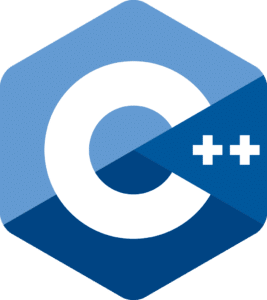
The original C language is still used today, but most modern developers have switched to C++. The general-purpose programming language is best known for being versatile; you can use it to make applications of all sorts.
Computer programs, mobile apps, video games, operating systems, entire browsers, even web development to some extent–if you can think of something, C++ can make it. And it will run it fast.
| Platform | Mostly software development; can be used in a variety of situations. |
| Difficulty | Relatively difficult to learn, especially for beginners. |
| Popularity | #5 in PYPL Popularity Index of Feb. 2021. #4 in TIOBE Index for Feb. 2021. #3 on IEEE’s top languages of 2023. Loved by 43% of StackExchange developers in 2020. |
| Average Salary | $70k/year according to PayScale. |
| Advantages | Pure versatility. You can use it for truly anything. Skills translate well to other languages. Fast and powerful. |
| Disadvantages | Not the right first language for total beginners. Incredibly complex due to being old and so universal in application. Not ideal for web development. |
C#

While C++ is a direct expansion of C, C# is simply inspired. Like C++, C# is known to be a more modern, more versatile version of the original, outdated language. So what’s the difference between the two?
For one, C# is a lot easier to learn. It’s simpler and less complex but can still be used to create a variety of different applications. It’s also a lot better for web development than C++. It is quite popular for game development and sits in the middle of the highest-salary languages.
Which one of these two should you pick? It depends. C++ is better if you need raw power. C# is simpler and easier to work with, but it’s still a versatile solution.
| Platform | Mostly software and web development. |
| Difficulty | Moderately easy to learn. |
| Popularity | #4 in PYPL Popularity Index of Feb. 2021. #5 in TIOBE Index for Feb. 2021. #6 on IEEE’s top languages of 2023. Loved by 60% of StackExchange developers in 2020. |
| Average Salary | $68k/year according to PayScale. |
| Advantages | Relatively easy to learn, especially compared to C++. Versatile. You can use it can in a variety of different applications. |
| Disadvantages | Not as powerful or as fast as C++. |
Swift

As far as iOS and macOS development go, Swift is the gold standard. It’s modern, fast, and security-focused. All that has caused it to explode in popularity. Developers love to program with it as it is effortless to write in, so it’s managed to monopolize iOS development.
If you plan to develop programs or apps for Apple devices, Swift is a great programming language to get started.
| Platform | iOS and macOS development. |
| Difficulty | Relatively easy to learn. |
| Popularity | #9 in PYPL Popularity Index of Feb. 2021. #15 in TIOBE Index for Feb. 2021. #16 on IEEE’s top languages of 2023. Loved by 60% of StackExchange developers in 2020. |
| Average Salary | $105k/year according to PayScale. |
| Advantages | Clean code with rapid development. The most popular language for iOS. |
| Disadvantages | Very little cross-platform support. Growing in popularity, but still considered a young language. |
Kotlin

If Swift is the language of choice for iOS development, then Kotlin is the primary language for Android. It doesn’t aim to be unique or groundbreaking, but instead draws inspiration from the languages you already know—that’s what makes it so loved by developers.
It’s also totally interoperable with Java, which makes it a direct replacement. But unlike Java, which is falling in popularity somewhat, Kotlin is only growing, and it’s a competitive language to learn.
| Platform | Primarily Android development, but also web and software development. |
| Difficulty | Relatively easy to learn. |
| Popularity | #12 in PYPL Popularity Index of Feb. 2021. #19 on IEEE’s top languages of 2023. Loved by 63% of StackExchange developers in 2020. |
| Average Salary | $100k/year according to PayScale. |
| Advantages | An excellent language for Android development as well as general purposes. An easy to learn and growing language. Interoperability with Java. |
| Disadvantages | Newer and less popular than Java, so fewer resources available online. |
Rust
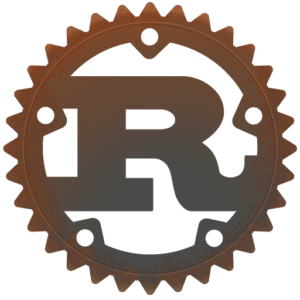
Rust is an almost universally loved programming language. In many ways, it’s similar to C++. It’s designed to be robust and fast, and you can use it in various projects.
Designed by Graydon Hoare at Mozilla Research, Rust was explicitly made to solve many problems that come with other languages. So if you’re struggling with older technologies like Java and C++, Rust might be the perfect successor.
| Platform | Mostly software and application development, but you can use it for anything. |
| Difficulty | Considered challenging to learn. |
| Popularity | #16 in PYPL Popularity Index of Feb. 2021. #18 on IEEE’s top languages of 2023. Loved by 86% (!) of StackExchange developers in 2020 (2016, 2017, 2018, and 2019). Dreaded the least of any language. |
| Average Salary | $115k/year according to PayScale. |
| Advantages | Powerful, fast, and efficient. Able to be used in a wide variety of situations. Loved by programmers. |
| Disadvantages | Stricter than many other languages, so difficult to code in as well as challenging to learn. |
Python

Python’s surge of popularity seemed to come out of nowhere, but it’s taken over almost all development fields. Currently, it’s the second most popular coding language on GitHub (after JavaScript). From powering server backend to machine learning software, Python can do it all.
It has almost everything you could ask for in a programming language: versatility, speed, and efficiency. Plus, it’s super easy to learn.
If potential and popularity alone are enough to get you motivated, Python is the one to choose. There’s no shortage of demand for it right now.
If you want to find out more about how to learn Python, read our post on the best Python tutorials.
| Platform | Web and software development. |
| Difficulty | Easy to learn. |
| Popularity | Python has exploded in popularity in the past few years. #1 in PYPL Popularity Index of Feb. 2021. #3 in TIOBE Index for Feb. 2021. #1 on IEEE’s top languages of 2023. Loved by 67% of StackExchange developers in 2020, and wanted by 30%, the most of any language. |
| Average Salary | $79k/year according to PayScale. |
| Advantages | It can be used pretty much anywhere, from web applications to software development to game creation. Cross-platform. High popularity means lots of resources and even more jobs. |
| Disadvantages | Slower than other languages. Python knowledge doesn’t translate well to other systems. |
Ruby

Ruby is all about simplicity. Its elegant syntax is easy to work with and designed to be as painless as possible, and it works in both front and backend development. Ruby language is practically written in English, so it’s elementary to learn its syntax.
But don’t be fooled by the appearance of simplicity. Ruby may not be a language of raw power, but it gets the job done well.
| Platform | Mostly frontend and backend web development. |
| Difficulty | Extremely easy to learn. |
| Popularity | #15 in PYPL Popularity Index of Feb. 2021. #14 in TIOBE Index for Feb. 2021. #14 on IEEE’s top languages of 2023. Loved by 43% of StackExchange developers in 2020. |
| Average Salary | $78k/year, according to PayScale. |
| Advantages | Clean, efficient code. The language of choice for effortless web development (especially with the framework Ruby on Rails). A large and vibrant community. |
| Disadvantages | Not as flexible or as popular as other languages. |
Java
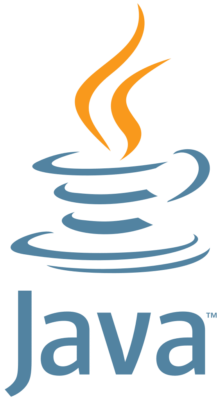
Java feels like the grandfather of all coding languages, but it’s not even as old as C++ in reality. Though many consider it outdated, it’s still used worldwide and on all sorts of devices.
Python is overtaking it, and while Java is generally declining in popularity, it certainly isn’t dead. There are thousands of jobs for Java backend developers, and demand remains high, making it a reliable choice.
| Platform | Software/Application, Web, and Mobile Development. |
| Difficulty | Tricky to pick up. |
| Popularity | Despite being an older language that’s fallen out of favor over the years, Java remains a top contender for popularity. #2 in PYPL Popularity Index of Feb. 2021. #2 in TIOBE Index for Feb. 2021. #2 on IEEE’s top languages of 2023. Loved by 44% of StackExchange developers in 2020. |
| Average Salary | $75k/year according to PayScale. |
| Advantages | Cross-platform and general-purpose. Longstanding and popular despite its age. Higher security. |
| Disadvantages | Difficult to learn. Bad performance. Popularity trends towards a decline. |
Scala
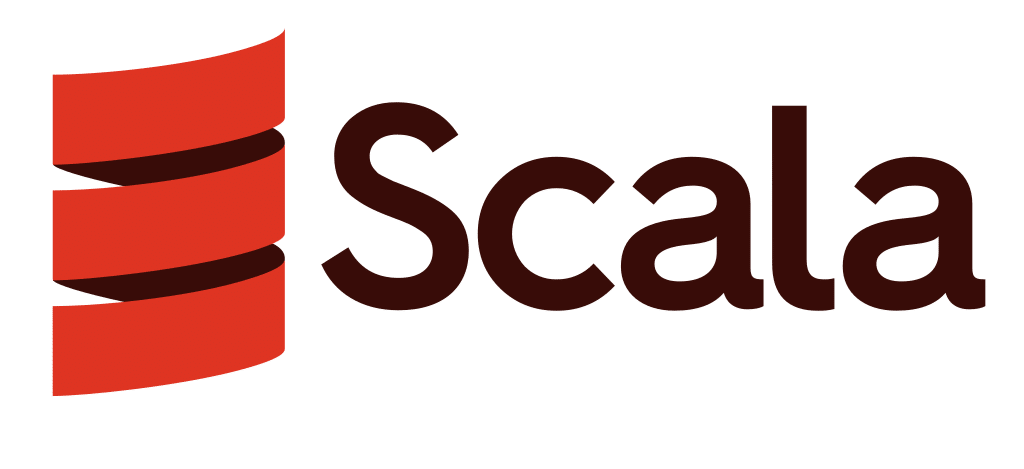
Much like Kotlin, Scala was created to replace Java and its many issues. It’s a powerful, multi-purpose language, but it’s much more concise. Though you can use it for the same systems as Java, it’s mostly used for big data processing and machine learning.
While it’s not exploding with the same popularity as other languages, there’s a lot of potential in this one.
| Platform | Mostly software/application development. |
| Difficulty | Complex and difficult to learn. |
| Popularity | #18 in PYPL Popularity Index of Feb. 2021. #21 on IEEE’s top languages of 2023. Loved by 53% of StackExchange developers in 2020. |
| Average Salary | $117k/year, according to PayScale. |
| Advantages | Less verbose and more concise than Java. Very powerful and can be used anywhere. |
| Disadvantages | Just as difficult to learn as Java. Not the right language for first-time programmers. |
Go
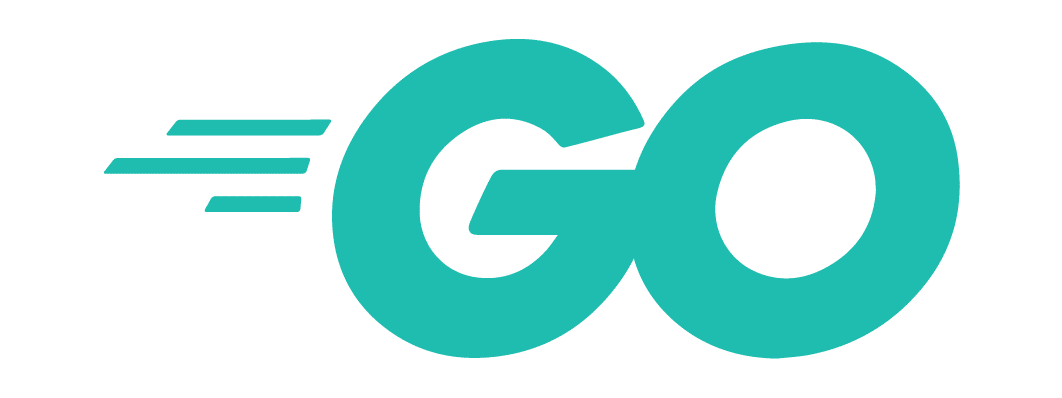
Last is Go, a Java and C++ alternative designed by Google. Performance is what it does best, eliminating the considerable compile times that afflict many other languages. It’s concurrent, working in the background as it performs multiple functions at once.
However, unless maximum speed is your only goal, other languages can better accomplish much of what Go does. It’s not always clear what exactly you should use Go for. Still, developers like it, and its popularity continues to grow. For instance, MailHog, the open source email testing tool that powers DevKinsta’s local email testing feature, is built with the Go programming language.
| Platform | Mostly backend web development. |
| Difficulty | Extremely easy to learn. |
| Popularity | #13 in PYPL Popularity Index of Feb. 2021. #13 in TIOBE Index for Feb. 2021. #8 on IEEE’s top languages of 2023. Loved by 62% of StackExchange developers in 2020. |
| Average Salary | $117k/year, according to PayScale. |
| Advantages | Very lightweight and fast. A modern solution to common programming problems. |
| Disadvantages | A newer language, so resources are scarce. Simplicity makes it less flexible. |
Which Programming Language Is the Best?
There’s no clear answer on which coding language is best. Each has its pros and cons and shines in different situations. But when it comes to specific categories, there are a few clear winners. These are the best languages for:
- Beginners: For the absolute easiest languages to learn, even if you have no experience at all, start with HTML/CSS, Go, Ruby, PHP, or Python.
- Web developers: HTML, CSS, and JavaScript are a necessity for frontend developers. Backend developers should look into Ruby, Python, PHP, and Go. And, of course, SQL for database management.
- Software developers: C++ is undoubtedly the most powerful. But don’t overlook Rust, Python, Scala, or C#. It all depends on the software you’re building.
- Mobile developers: Swift is best for iOS, and Kotlin for Android. But general-purpose languages like C++ and Java can work well too.
- High salary: Swift, Rust, Scala, Kotlin, and Go all help you earn about $100k/year, with Scala and Go generating the highest salaries. Also, check out our developer salaries for various positions.
- Popularity: Python is highly popular, and considering its versatility, it stands to stay at the top for a long time. JavaScript, Java, C#, and C++ are also quite popular themselves.
- Flexibility: C++ might be the giant in flexibility, but Rust, Java, Scala, Kotlin, and Python all work well cross-platform and in various situations.
Summary
Picking a single programming language from a list isn’t an easy task. But if you know what you want to do and where to start, it’s much easier to sort that list down into a few of the best candidates. That’s true whether you want the “hottest” language, the one with the best salary, or just those that are easiest to learn.
Learning how to program will net you one of the most flexible jobs you can get, allowing you to work remotely and choose whatever technologies you prefer. While no one programming language is the best of them all, a push in the right direction can help you choose the right one.
Get coding!
Did we miss out on any other programming language? We’d love to hear your opinion in the comment section below. Check out Kinsta’s career page for programming and tech-related job opportunities.


